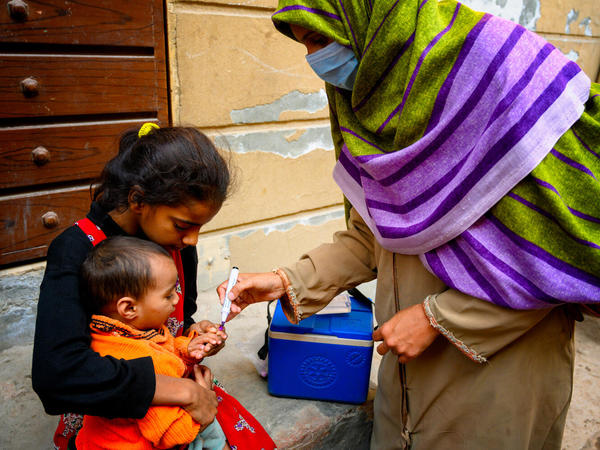If you've invested time in a quality Situation Analysis, led by a problem statement, you should have a good sense already of your communication objectives.
Generally, devising a communication objective or goal helps us to keep the focus on what we are asking families, influencers and others to do. A deceivingly simple objective of raising awareness of campaigns is important, but it is not enough that people know about the campaign, we want them to vaccinate every time one takes place.
These behavioural objectives will also help you zero-in on high risk populations, people who may be small in number but represent the highest epidemiological risk for the programme. You will undoubtedly come up with several objectives in the course of your situation analysis research. Now the task is selecting those objectives that will have the most impact on lowering the epidemiological risk, reducing missed children, and increasing coverage.
In C4D, objectives are born from our problem statement. They highlight an existing problem behavior and describe how to reach a desirable behavior. C4D is about this action, not simply changes in attitude, perception, or knowledge. Objectives must therefore be specific so that they can't be misinterpreted but also so that we can successfully measure whether we have reached them or not.
The simplest guide for writing quality objectives is to use the SMART format. Have colleagues and others interrogate your objectives for relevance, specificity, measurability, and how realistic they are. Writing objectives well should be difficult, they will after all form the foundation of your strategic interventions to come, allowing you to constantly ask, "will this activity help us achieve our objective?"
This familiar format can help us get to the level of detail and analysis required.
| Specific |
1. Specific in terms of the desired behaviour of a specific group and of the geographical location. |
| Measurable | 2. Measurable so that changes in people's behaviour can be measured, either quantitatively or qualitatively. |
| Achievable | 3. Achievable in that the behavioural results correlate to a target that can feasibly be attained and that all necessary resources are identified and budgeted. |
| Relevant | 4. Relevant so that the planned behavioural result(s) represent a milestone in the results chain, and will contribute to the achievement of commitments to the interruption of transmission. |
| Time-Bound | 5. Time-bound in that a time frame has been set within which change is expected to happen. |
Use this template to fill in your own objectives.
Let's take an example. Our problem statement could be that: Caregivers in Cameroon do not inform authorities when vaccinators fail to come to their homes during a campaign. The behaviour to promote may be:
-
Caregivers with children under-five years old should inform the local health clinic or social mobilizer that a vaccinator has not been to their home within 24 hours of realizing their children have been missed.
-
Caregivers with children under five years old should call the Polio hotline if a vaccination team has not come to their home within 24 hours of realizing they have been missed.
From the problem and the behaviours to promote above, SMART objectives could be written as below:
Objective 1
By the end of the year 2016, an increase of 50% of caregivers (fathers, mothers, grandparents and other caregivers) in Cameroon will notify a health worker within 24 hours of realizing that their children have been missed by the campaign teams.
Objective 2
By the end of the year 2016, an increase of 50% of caregivers (fathers, mothers, grandparents and other caregivers) in Cameroon will call the polio hotline within 24 hours of realizing that their children have been missed by the campaign teams.
There are obviously ways to improve these objectives and a peer review process is essential, but generally, we can understand in this example that we are asking parents of young children to act if vaccination teams do not come to their doors. The audience could be more clearly defined based on research of who makes health decisions at the household level, for example.
You can also review your objective through the lens of the 5Ws.
Using the same example:
| WHO: | 50% increase in caregivers |
| WHAT: | Will inform local health workers or call the hotline |
| WHEN: | Within 24 hours of realizing their house has been missed |
| WHERE: | At local health clinics or using their telephones |
| WHY: | Because too many children are being missed due to vaccinator not visiting households. |
Once your objective reflects your target issue based on evidence, we must measure our impact. If the SMART formula has been adopted then we have a timeframe (by the end of 2016), as well as a measure of success (50% increase). This could be measured through logs and tracking reports at health centres and by keeping detailed statistics about calls into the hotline, as well as through spot checks of households reporting being unvisited. Keeping an eye on campaign data and coverage will also give an indication of success.
Learn more
Explore the other two learning modules in this 3-step tutorial to design evidence-driven communication strategies to help vaccinate every child.
Integrate communications tactics and understand their strengths and weaknesses, then evaluate performance.
Define your target audience and barriers to change, then develop messages and choose channels to reach your audience.



